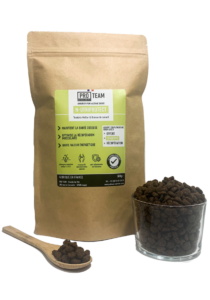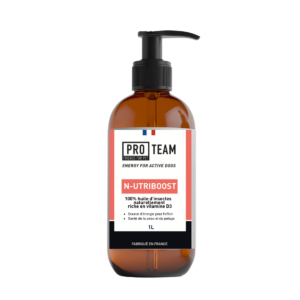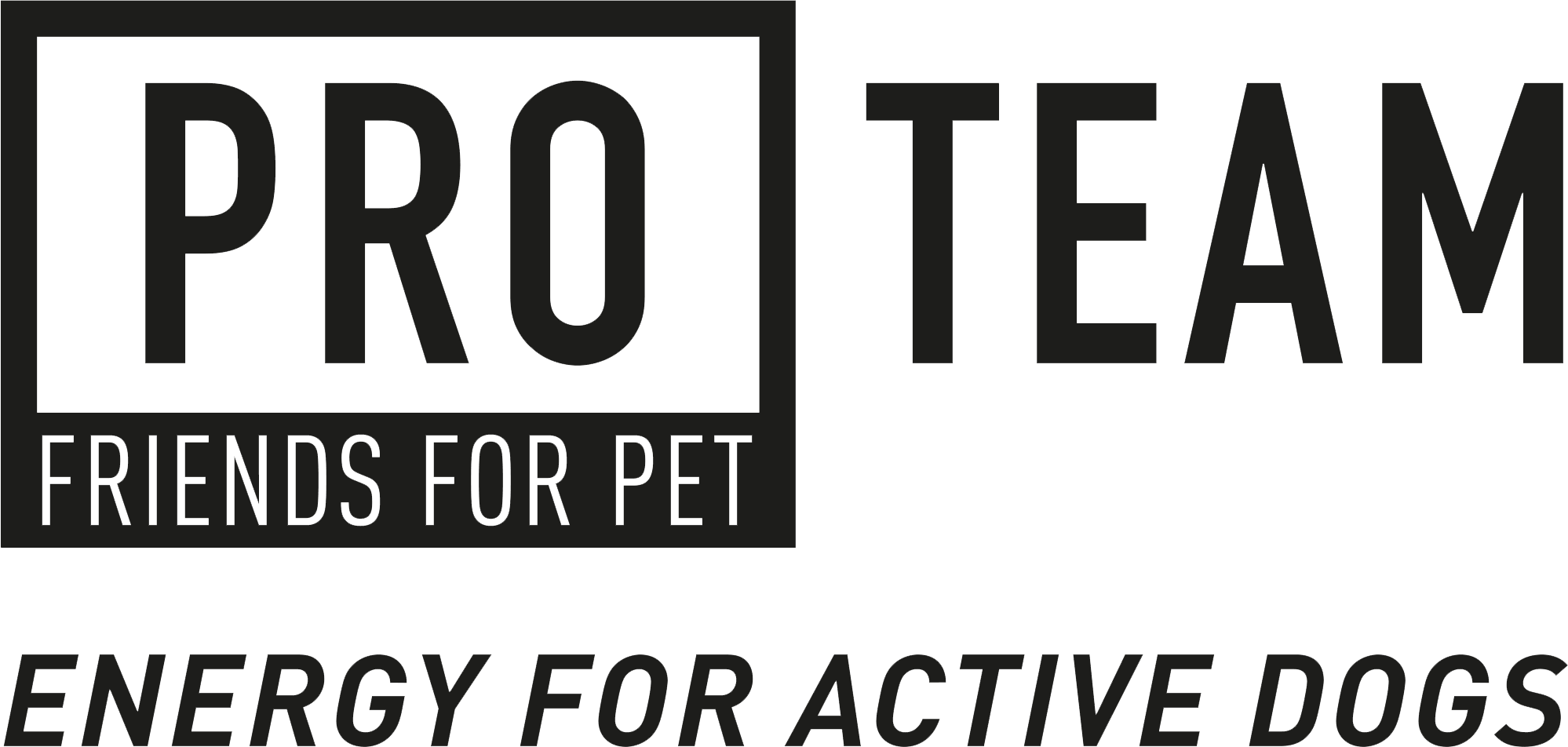Osteoarthritis in Dogs: A Degenerative Condition to Understand
What is Osteoarthritis?
Osteoarthritis, also called degenerative joint disease, is a progressive condition that affects the joints. It is characterized by the gradual breakdown of articular cartilage, a flexible and elastic tissue that covers the ends of bones and allows joints to move smoothly. When this cartilage wears away or deteriorates, bones rub directly against each other, causing pain, stiffness, and loss of mobility.
In dogs, osteoarthritis can affect multiple joints, including the hips, elbows, knees, and spine. This condition is common in older dogs but can also appear in younger dogs, depending on several factors.
Mechanisms of Osteoarthritis
Articular cartilage acts as a cushion between bones. When it deteriorates, it becomes less smooth and less capable of absorbing shocks. This leads to several changes in the joint:
- Cartilage wear: As the cartilage breaks down, it becomes thinner and loses its ability to protect the bones.
- Bone friction: When cartilage disappears, bones rub directly against each other, leading to inflammation and pain.
- Osteophyte formation: In response to this degradation, the body tries to repair the joints by forming new bony growths called osteophytes. These growths restrict movement and worsen pain.
- Synovial inflammation: The synovial membrane, which produces joint fluid, can become inflamed, reducing the joint’s natural lubrication.
These mechanisms create a vicious cycle: cartilage wear causes inflammation, which leads to further degradation and wear.
Causes and Risk Factors of Osteoarthritis
- Aging
The main factor of osteoarthritis is natural aging. Over time, joints wear out naturally, especially in dogs that lead an active life or have experienced joint injuries. - Dysplasia
Joint malformations, such as hip or elbow dysplasia, are congenital anomalies affecting joint structure. Dogs with dysplasia often experience premature cartilage wear, leading to early-onset osteoarthritis. - Trauma or Injury
Past injuries, such as fractures or sprains, can weaken joints and accelerate wear. For example, an anterior cruciate ligament injury can lead to knee osteoarthritis. - Excess Weight
Obesity is a major risk factor. Excess weight puts additional strain on the joints, particularly those in the hips and knees, accelerating cartilage wear and increasing the risk of osteoarthritis. - Intense Physical Activity
Working dogs or dogs involved in intense physical activities (agility, canicross) put significant stress on their joints. Without proper management or adequate nutritional support, this can lead to early-onset osteoarthritis.
Dog Breeds Most Affected by Osteoarthritis
Certain dog breeds are more prone to osteoarthritis due to their morphology or genetic predispositions.
- Large breeds: Dogs such as Labrador Retrievers, German Shepherds, and Rottweilers are particularly vulnerable to joint issues. Their significant weight places constant pressure on their joints, especially in the hips and elbows. Additionally, these breeds are often predisposed to dysplasia, which accelerates the onset of osteoarthritis.
- Giant breeds: Giant dogs like Saint Bernards, Great Danes, and Neapolitan Mastiffs experience significant stress on their joints due to their size and weight. They often develop osteoarthritis at a relatively young age, particularly in the hips and knees.
- Small breeds: Even small dogs can suffer from osteoarthritis. Breeds like Dachshunds and Shih Tzus may experience congenital bone malformations (such as patellar luxation), which can lead to premature cartilage wear and osteoarthritis.
- Sporting or working dogs: Highly active dogs, such as Border Collies, Jack Russell Terriers, or hunting dogs, can be prone to osteoarthritis due to the repetitive stress on their joints. Intense physical activities can accelerate cartilage wear, especially without preventive care.
Symptoms of Osteoarthritis in Dogs
Osteoarthritis develops progressively, and it can be difficult to detect in its early stages. Owners should watch for the following signs:
- Limping: The dog may limp, especially after rest or intense exercise.
- Joint stiffness: Especially in the morning or after long periods of rest, the dog may appear stiff and have trouble getting up.
- Reduced activity: The dog may lose interest in play or walks, preferring to lie down.
- Pain: The dog may whine when moving or when touched near the joints.
- Behavioral changes: Some dogs may become irritable or anxious due to chronic pain.
How to Diagnose Osteoarthritis in Dogs
The diagnosis of osteoarthritis is based on a thorough clinical examination by a veterinarian, as well as imaging tests:
- Joint palpation: The veterinarian assesses pain, stiffness, and joint mobility.
- X-rays: X-rays help visualize the characteristic signs of osteoarthritis, such as cartilage thinning and osteophyte formation.
- MRI or CT scan: In more complex cases, advanced imaging tests may be needed to better evaluate soft tissues and detect early signs of wear.
Management and Treatment of Osteoarthritis in Dogs
- Weight Control
Excess weight is a major aggravating factor for osteoarthritis. A weight management program, combining a tailored diet and moderate exercise, can significantly relieve the dog’s joints. - Tailored Exercise
While it’s important to maintain physical activity, exercises should be moderate and regular. Leashed walks and swimming are especially recommended, as they help strengthen muscles without overloading the joints. - Diet and Supplements
A specific diet, combined with supplements, can slow the progression of osteoarthritis. At PRO TEAM, we offer suitable solutions:- PRO TEAM N-UTRIPROTECT: Rich in omega-3s, this supplement helps reduce joint inflammation. Studies show that regular omega-3 supplementation can reduce pain by 25% in dogs with osteoarthritis.

- PRO TEAM N-UTRIBOOST: This supplement helps regenerate cartilage and support connective tissues, improving mobility in dogs with osteoarthritis.
- PRO TEAM N-UTRIPROTECT: Rich in omega-3s, this supplement helps reduce joint inflammation. Studies show that regular omega-3 supplementation can reduce pain by 25% in dogs with osteoarthritis.

- Medications
Nonsteroidal anti-inflammatory drugs (NSAIDs) are often prescribed to relieve pain and inflammation. However, they should be administered under veterinary supervision to avoid undesirable side effects. - Monoclonal Antibodies
Since 2021, the use of anti-NGF monoclonal antibodies has added a new dimension to managing osteoarthritis pain in domestic carnivores. Two molecules are available: bedinvetmab for dogs. These antibodies provide unprecedented analgesic efficacy and have remarkable safety, making them particularly useful for animals suffering from multimorbidities, common in older pets. However, it’s essential to integrate them into a multimodal, individualized approach to osteoarthritis management. Monomodal use could be counterproductive. These antibodies should be administered during dedicated consultations, where the animal’s pain is assessed.(Source: CAP DOULEUR) - Physical Therapy and Complementary Care
Therapies such as physical therapy, acupuncture, and massage can help relieve pain and improve mobility. They are often used in conjunction with medication.
Conclusion
Osteoarthritis is a common degenerative condition in dogs, but it can be effectively managed. With a tailored program that includes weight management, moderate exercise, and supplements like PRO TEAM N-URIPROTECT and PRO TEAM N-UTRIBOOST, it is possible to improve the quality of life for dogs with osteoarthritis. For personalized advice, it is recommended to consult a veterinarian.
Discover the PRO TEAM range on our sales site: www.supercroquettes.com
Feel free to share your experiences and personal advice. If you have any questions or requests for additional information, do not hesitate to contact us. You can also follow our news on Facebook. Thank you for reading this article and see you soon!

